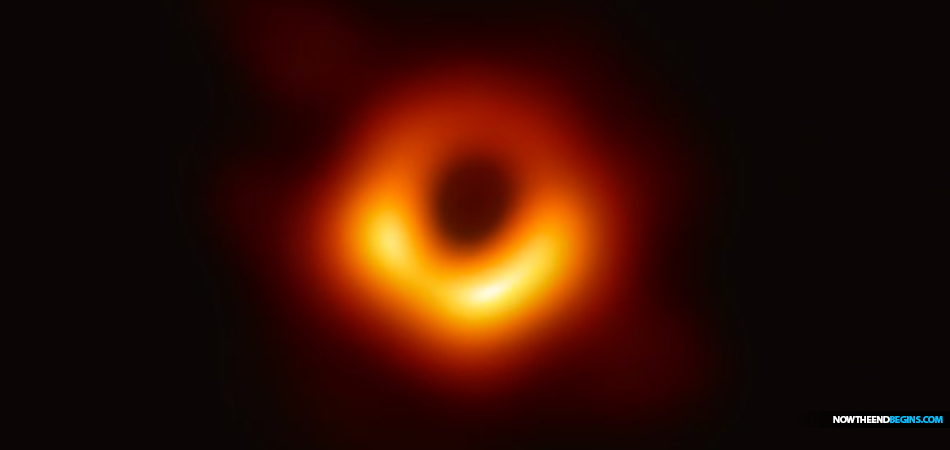
After more than a decade of work, millions of dollars in funding, and the creation of a "virtual" telescope the size of Earth, a global collaboration of scientists has published the first-ever picture of a black hole.
Black holes are some of the
strangest and most fascinating objects found in outer space. They are objects of extreme density, with such strong gravitational attraction that even light cannot escape from their grasp if it comes near enough.
Yesterday, for the very first time, a photo was taken of one and it's awesome.
The image shows a bright ring formed as light bends in the intense gravity around a black hole that is 6.5 billion times more massive than the Sun
FROM BUSINESS INSIDER: The
Event Horizon Telescope (EHT) collaboration announced the
image on Wednesday morning with six simultaneous press conferences, in conjunction with the publication of six scientific papers.
"This is the nucleus of the galaxy M87, and this is the first ever image of a black hole,"
Heino Falcke, an astrophysicist at Radboud University Nijmegen and an EHT collaborator, said during a live
press briefing. "You cannot see a black hole, but you can actually see its shadow. That's when the light disappears behind the event horizon, creating that region, that dark shadow we see there."
He added: "We're looking at a region that we've never looked at before — a region we cannot imagine being there. It feels like looking at the gates of Hell, at the end of space and time: the event horizon, the point of no return. That is awe-inspiring to me, at least, but it's also important to physics."
Since 2006, radio telescopes around the globe have worked together to resolve dark, hulking, and important beasts that lurk at the centers of two different galaxies.
The EHT project's ultimate goal was baked into its name: take pictures of
the event horizon.
"Just the mere fact of being able to see such a thing is awesome," Timothy Brandt, an astrophysicist at the University of California, Santa Barbara who studies black holes but is not part of the EHT collaboration, told Business Insider prior to the announcement.
EHT used observatories at 11 different locations around the globe to create a "virtual" radio telescope that's about the size of planet Earth. This helped researchers make out the details of a supermassive black hole, so named because they can be millions if not billions of times as massive as stars like the sun.
Although EHT can target Sagittarius A* (pronounced "A-star"), a supermassive black hole at the center of our
Milky Way galaxy, they released an image of Messier 87, a "supergiant" galaxy about 53.5 million light-years away. Scientists said the image unveiled today shows the black hole is about 62 billion miles (100 billion kilometers) wide, which is larger than the solar system, and weighs as much as 6.5 billion suns.
READ MORE
No comments:
Post a Comment